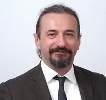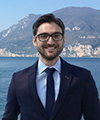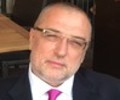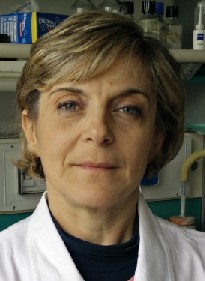Studying at the University of Verona
Here you can find information on the organisational aspects of the Programme, lecture timetables, learning activities and useful contact details for your time at the University, from enrolment to graduation.
Academic calendar
The academic calendar shows the deadlines and scheduled events that are relevant to students, teaching and technical-administrative staff of the University. Public holidays and University closures are also indicated. The academic year normally begins on 1 October each year and ends on 30 September of the following year.
Course calendar
The Academic Calendar sets out the degree programme lecture and exam timetables, as well as the relevant university closure dates..
| Period | From | To |
|---|---|---|
| Lezioni 2 Anno 1 semestre CLID ROV | Sep 24, 2020 | Nov 21, 2020 |
| Lezioni 3 Anno 1 semestre CLID ROV | Oct 5, 2020 | Nov 28, 2020 |
| Lezioni 1 Anno 1 semestre CLID ROV | Oct 12, 2020 | Dec 19, 2020 |
| Insegnamento annuale | Oct 12, 2020 | Apr 16, 2021 |
| Lezioni 3 Anno 2 semestre CLID ROV | Jan 25, 2021 | Mar 5, 2021 |
| Lezioni 1 Anno 2 semestre CLID ROV | Feb 8, 2021 | Apr 16, 2021 |
| Lezioni 2 Anno 2 semestre CLID ROV | Mar 22, 2021 | May 21, 2021 |
| Session | From | To |
|---|---|---|
| Sessione Invernale 3 anno | Dec 9, 2020 | Jan 22, 2021 |
| Sessione Invernale 1 anno | Jan 7, 2021 | Feb 5, 2021 |
| Sessione Invernale 2 anno | Jan 7, 2021 | Jan 29, 2021 |
| Sessione Primaverile 3 anno | Mar 15, 2021 | Apr 1, 2021 |
| Sessione Estiva 2 anno | Jun 7, 2021 | Jun 30, 2021 |
| Sessione Estiva 1 anno | Jul 13, 2021 | Jul 30, 2021 |
| Sessione Estiva 3 anno | Jul 19, 2021 | Jul 30, 2021 |
| Sessione autunnale 1-2-3- anno | Sep 1, 2021 | Oct 1, 2021 |
| Session | From | To |
|---|---|---|
| Sessione di Laurea Autunnale 2020/2021 CLID ROV | Oct 1, 2021 | Nov 30, 2021 |
| Sessione di Laurea Primaverile 2020/2021 CLID ROV | Mar 1, 2022 | Apr 30, 2022 |
| Description | Period | From | To |
|---|---|---|---|
| Tirocinio 2 anno -1 Semestre CLID ROV | Tirocinio 2 anno -1 Semestre CLID ROV | Nov 23, 2020 | Dec 22, 2020 |
| Tirocinio 2 anno -2 Semestre CLID ROV | Tirocinio 2 anno -2 Semestre CLID ROV | Feb 1, 2021 | Mar 19, 2021 |
| Tirocinio 3 anno -2 Semestre CLID ROV | Tirocinio 3 anno -2 Semestre CLID ROV | Apr 7, 2021 | Jul 9, 2021 |
| Tirocinio 1 anno -1 Periodo CLID ROV | Tirocinio 1 anno -1 Periodo CLID ROV | Apr 26, 2021 | May 28, 2021 |
| Tirocinio 1 anno - 2 Periodo CLID ROV | Tirocinio 1 anno - 2 Periodo CLID ROV | Jun 7, 2021 | Jul 9, 2021 |
| Tirocinio 2 anno -2 Sem 2^ per CLID ROV | Tirocinio 2 anno -2 Sem 2^ per CLID ROV | Jul 1, 2021 | Jul 30, 2021 |
| Tirocinio 1 anno - Autunno 2021 CLID ROV | Tirocinio 1 anno - Autunno 2021 CLID ROV | Sep 1, 2021 | Sep 30, 2021 |
| Tirocinio 2 anno - Autunno 2021 CLID ROV | Tirocinio 2 anno - Autunno 2021 CLID ROV | Sep 1, 2021 | Sep 30, 2021 |
Exam calendar
Exam dates and rounds are managed by the relevant Medicine Teaching and Student Services Unit.
To view all the exam sessions available, please use the Exam dashboard on ESSE3.
If you forgot your login details or have problems logging in, please contact the relevant IT HelpDesk, or check the login details recovery web page.
Should you have any doubts or questions, please check the Enrollment FAQs
Academic staff
 francesco.antonucci@aocardarelli.it
francesco.antonucci@aocardarelli.it
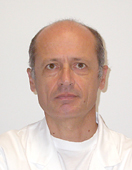
Bisoffi Zeno
 zeno.bisoffi@sacrocuore.it
zeno.bisoffi@sacrocuore.it
 +390456013326
+390456013326
 martina.bonetti@apss.tn.it
martina.bonetti@apss.tn.it
 borghesi.a@mail.apss.tn.it
borghesi.a@mail.apss.tn.it
 fulviocampolongo@gmail.com
fulviocampolongo@gmail.com
 francesca.fontana@univr.it
francesca.fontana@univr.it
 renata.lazzeri@apss.tn.it
renata.lazzeri@apss.tn.it
 mattia.marchiori@univr.it
mattia.marchiori@univr.it
 loredana.pancheri@univr.it
loredana.pancheri@univr.it
Study Plan
The Study Plan includes all modules, teaching and learning activities that each student will need to undertake during their time at the University.
Please select your Study Plan based on your enrollment year.
1° Year
| Modules | Credits | TAF | SSD |
|---|
2° Year activated in the A.Y. 2021/2022
| Modules | Credits | TAF | SSD |
|---|
3° Year activated in the A.Y. 2022/2023
| Modules | Credits | TAF | SSD |
|---|
| Modules | Credits | TAF | SSD |
|---|
| Modules | Credits | TAF | SSD |
|---|
| Modules | Credits | TAF | SSD |
|---|
Legend | Type of training activity (TTA)
TAF (Type of Educational Activity) All courses and activities are classified into different types of educational activities, indicated by a letter.
Periodontology and dental hygiene techniques (2021/2022)
The teaching is organized as follows:
FONDAMENTI DI PARODONTOLOGIA
Credits
3
Period
See the unit page
Academic staff
See the unit page
Learning outcomes
The course aims to critically educate the student on the collection of clinical data of the oral cavity, in order to understand the evolution of periodontal disease and provide an overall framework to facilitate the correct therapeutic approach with debridment protocols respecting ergonomic principles. The course also aims to provide the student with the tools, methodologies and knowledge of the protocols of non-surgical prevention and treatment of gingivitis and periodontal disease. APPLIED ERGONOMICS MODULE Training objectives: The course aims to provide the basic cognitive elements in the field of ergonomics in the field of dentistry, project management in the health field, prevention of occupational diseases. MODULE FUNDAMENTALS OF PERIODONTOLOGY Training objectives: The aim of the course is to learn about the anatomy and function of periodont as well as the main pathologies from which it is frequently affected in the population. Provide the knowledge needed to understand the evolution of periodontal disease and provide an overall framework to facilitate the correct therapeutic approach. Special attention is dedicated to prevention and non-surgical treatment. MECHANICAL ORAL HYGIENE TECNICHE MODULE Training objectives: The course aims to critically educate the student on the collection of clinical data of the oral cavity, the mechanical removal protocols of hard and soft deposits with mechanical instrumentation and with polishing and air-polishing. The aim of the course is also to provide the basis for managing the patient with dental hypersensitivity. NON-SURGICAL PERIODONTAL THERAPY MODULE Training objectives: The course aims to critically educate the student about the tools, methodologies and protocols of non-surgical prevention and treatment of gingivitis and periodontal disease. ORAL HYGIENE EDUCATION METHODS MODULE Training objectives: The course aims to provide the student with modalities and strategies of communication with the patient. It also proposes a deepening of the founding principles of the welfare relationship, techniques and strategies for managing effective communication with the person and the family. It aims to develop educational design skills, to encourage learning self-care skills and empowerment
Program
------------------------
MM: TECNICHE DI IGIENE ORALE MECCANICA
------------------------
- Dental Hygienist's basic instruments - Clinical Documentation, patients record and assessment: personale, dentale and medical histories, extra- and intra-oral examinationtion, parodontal chart. - Indices and scoring methods - Periodontal examination - Mechanicalinstruments and principles for instrumentation - extrinsic stain removal: Polishing e air-polishing - Ergonomic practice - Dental Hygiene products and patients with diabetes or celiac disease: Evidence based practice - Erosive Tooth Wear - Dentin Hypersensitivity
------------------------
MM: ERGONOMIA APPLICATA
------------------------
The course will cover the following topics: The professional role of the dental hygienist: - evolution - responsibility - ethical and deontological aspects - contract types General ergonomics: - basic concepts Applied ergonomics : - general principles - positions and movements - operative procedures - occupational illnesses - work-related stress and burnout syndrome Quality certification in healthcare
------------------------
MM: PARODONTOLOGIA
------------------------
------------------------ MM: Parodontologia 1 ------------------------ - Anatomy - Epidemiology - Microbiology - Risk factors - Pathogenesis - Periodontal disease and sistemic diseases ------------------------ MM: Parodontologia 2 ------------------------ Anatomy and physiology of periodontal tissue. Eziology of periodontal disease. Anamnesis and clinical examination . Classification on periodontal disease diagnosis. Principles of surgical therapy ( conservative , mucogingival, regenerative e resective surgery. Non surgical terapy literature review. Principle of implant therapy and anatomy of perimplant tissue. Perimplant infections
Bibliography
Examination Methods
written and oral
Career prospects
Module/Programme news
News for students
There you will find information, resources and services useful during your time at the University (Student’s exam record, your study plan on ESSE3, Distance Learning courses, university email account, office forms, administrative procedures, etc.). You can log into MyUnivr with your GIA login details: only in this way will you be able to receive notification of all the notices from your teachers and your secretariat via email and soon also via the Univr app.
Gestione carriere
Orario Lezioni
Documents
| Title | Info File |
|---|---|
|
|
pdf, it, 459 KB, 22/09/23 |
|
|
pdf, it, 513 KB, 26/01/24 |
|
|
pdf, it, 498 KB, 23/02/24 |
|
|
pdf, it, 478 KB, 26/01/24 |
|
|
pdf, it, 1228 KB, 25/01/23 |
|
|
pdf, it, 1453 KB, 07/02/24 |
Graduation
Documents
| Title | Info File |
|---|---|
|
|
pdf, it, 714 KB, 13/11/23 |
Student login and resources
in questa sede verranno pubblicati i calendari delle lezioni




